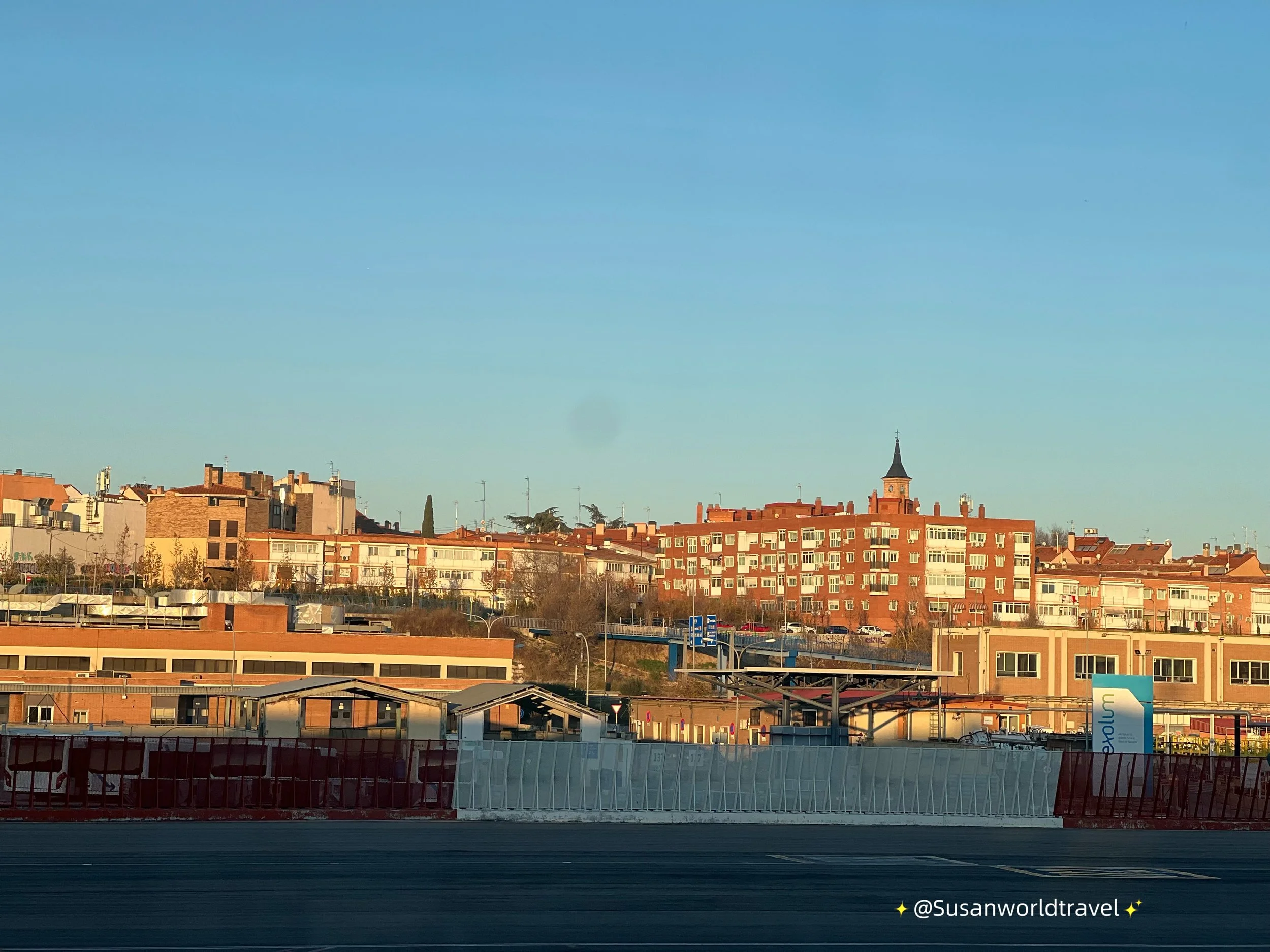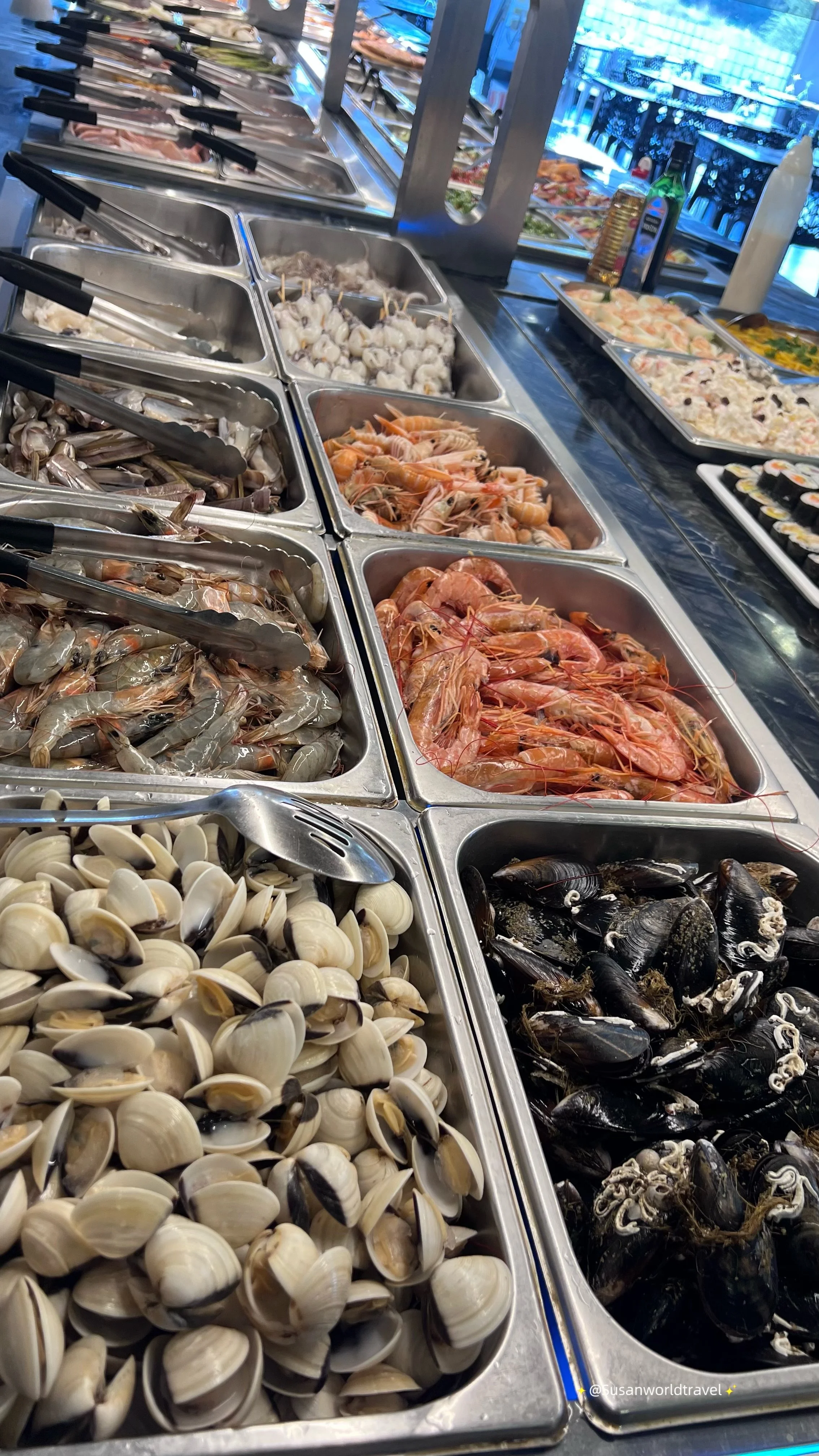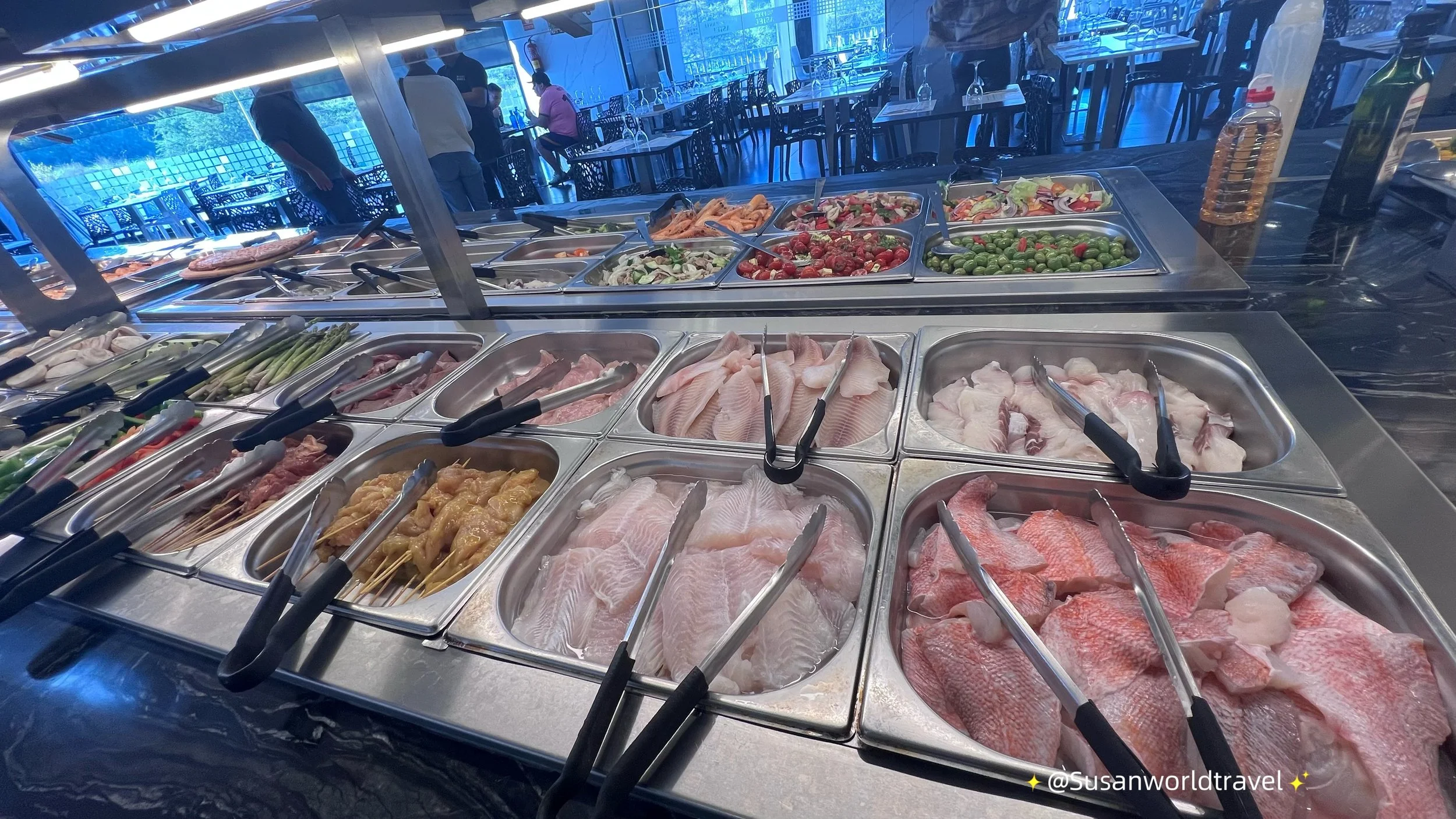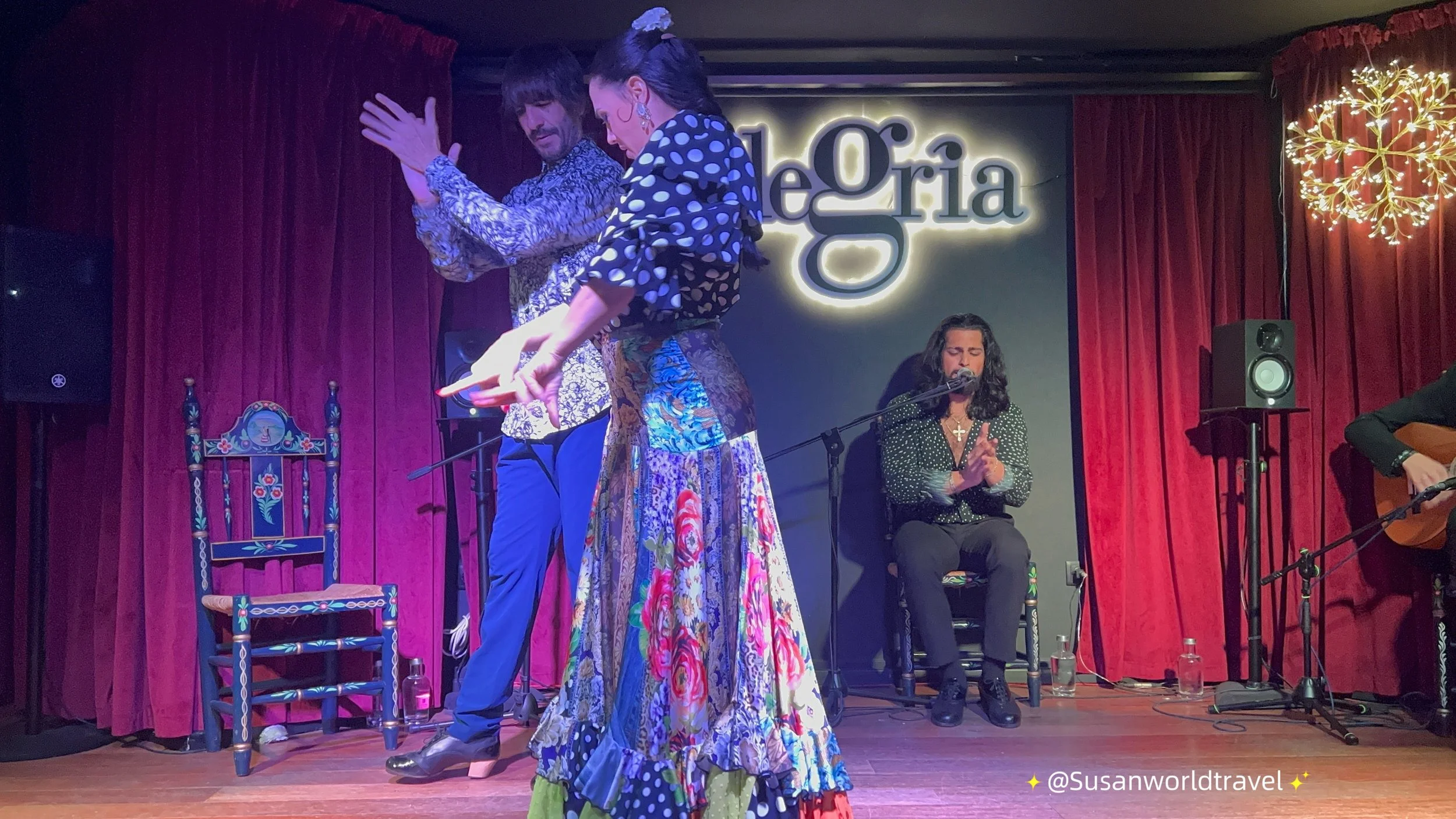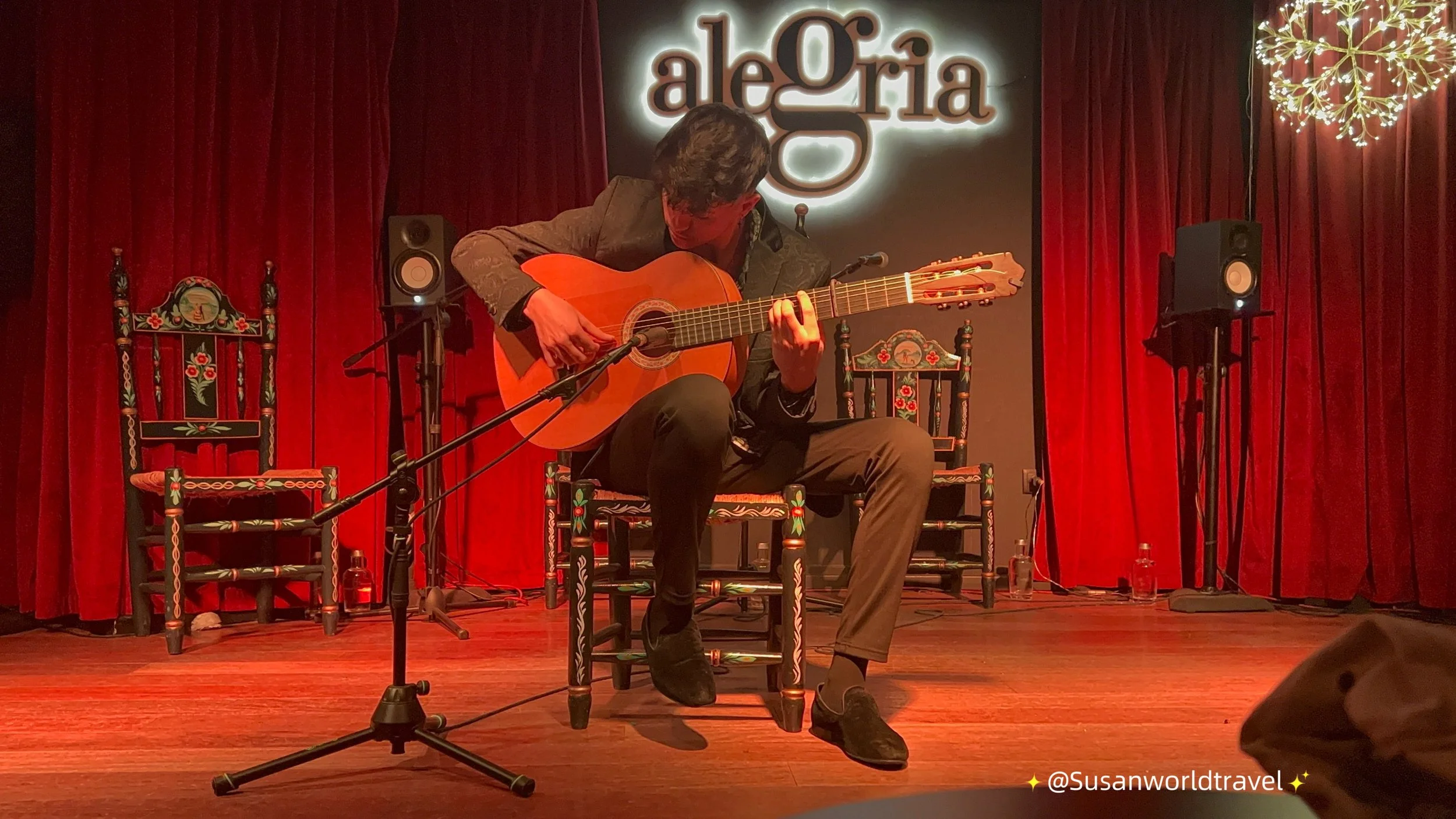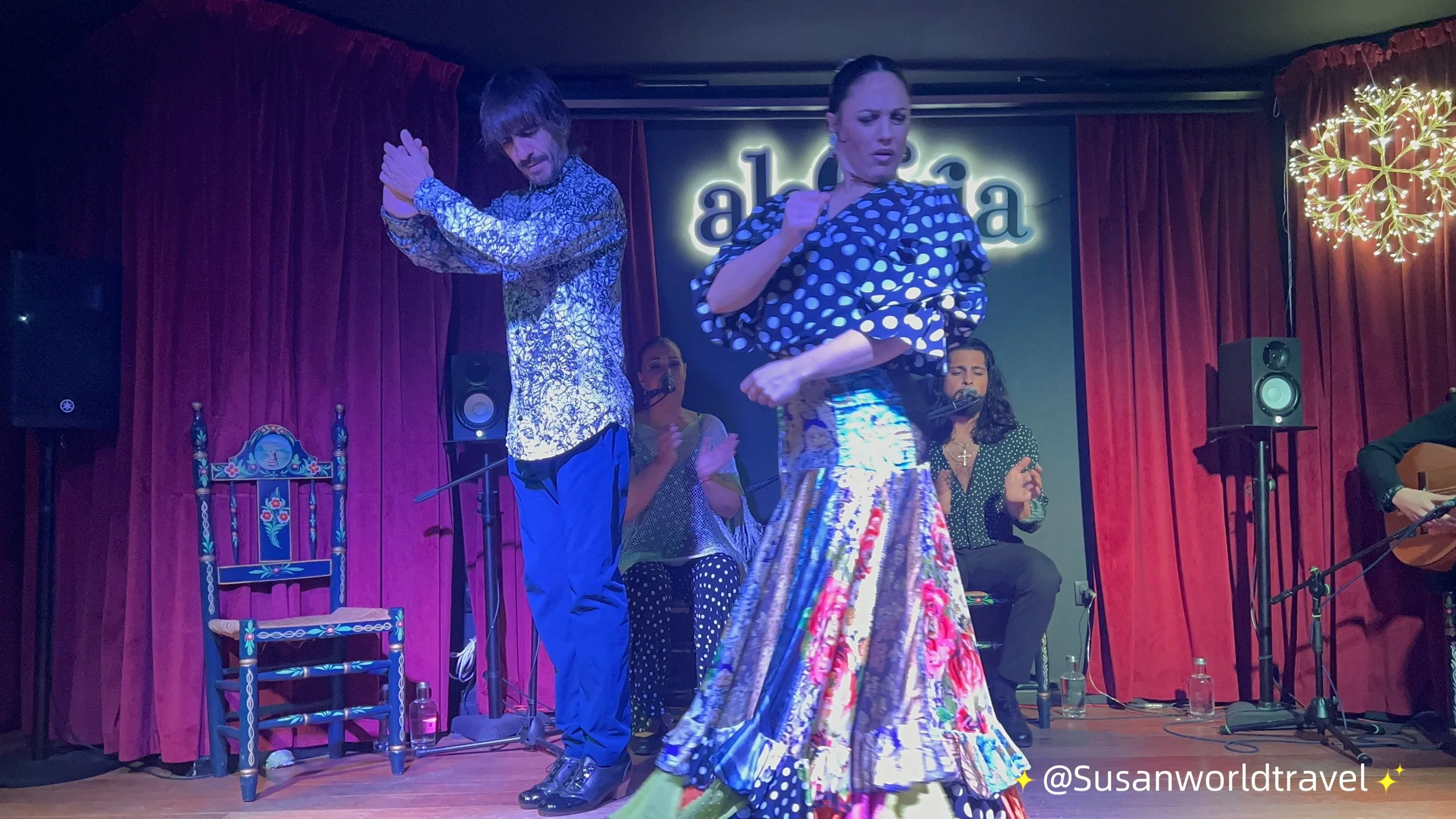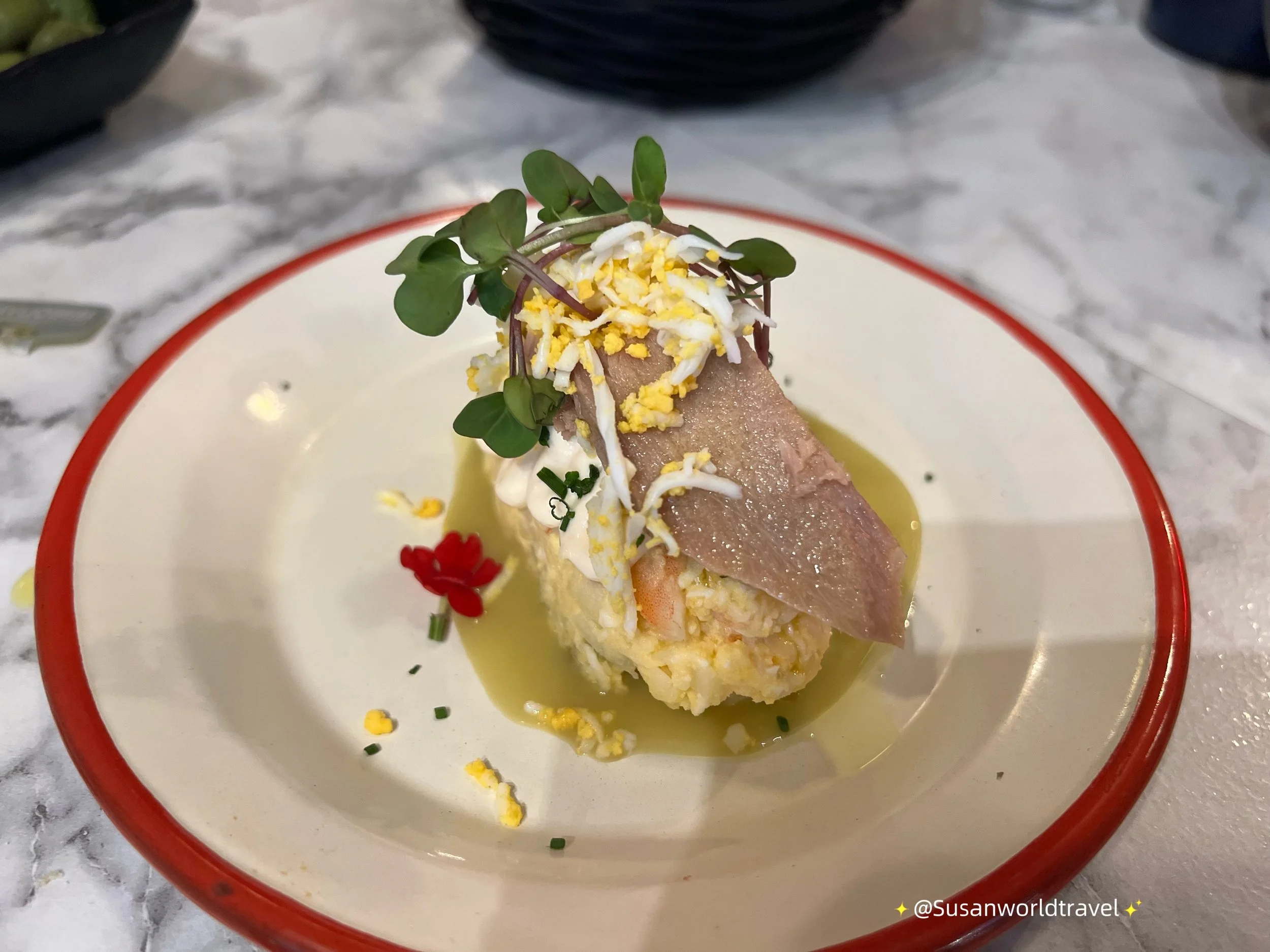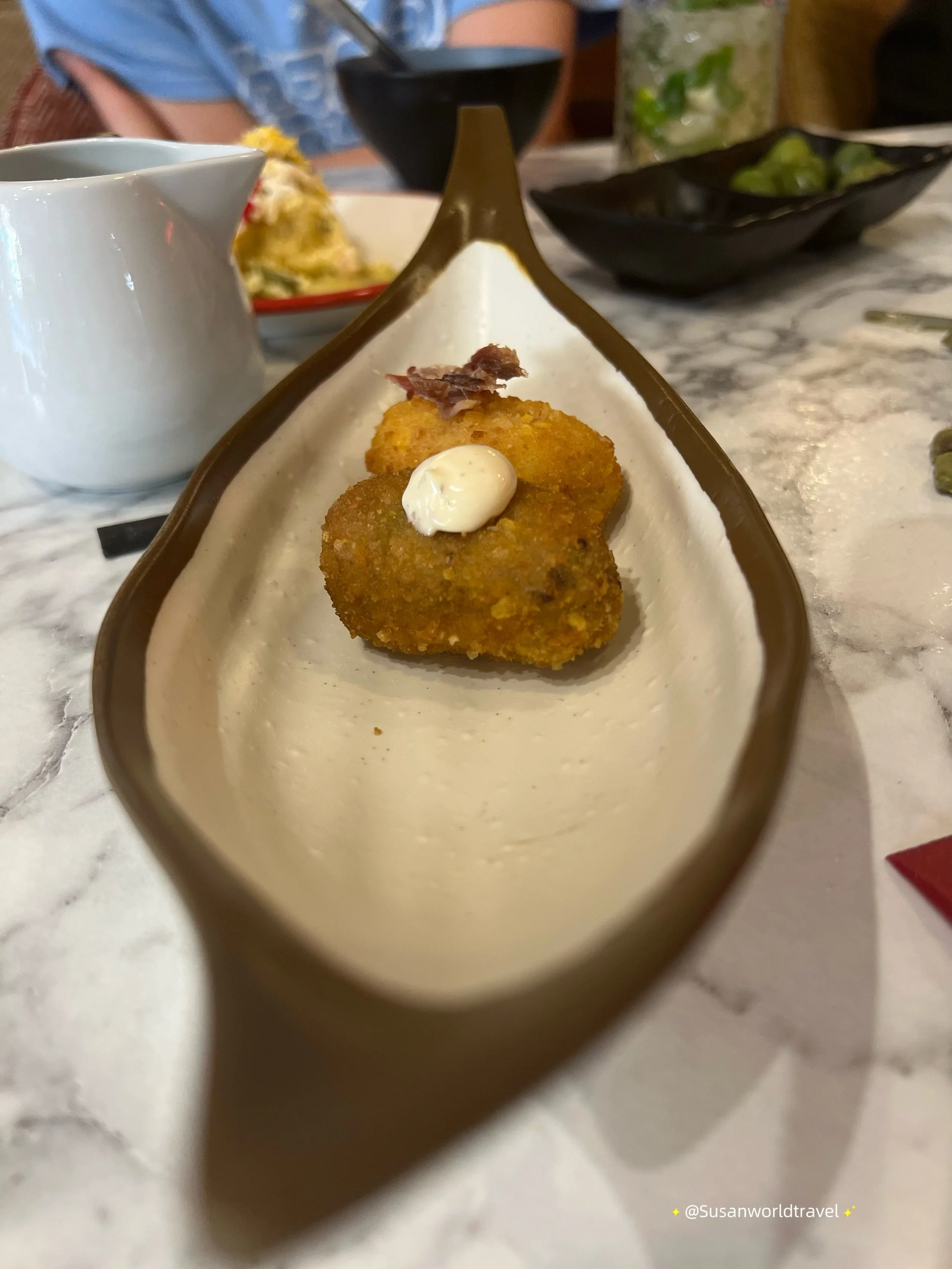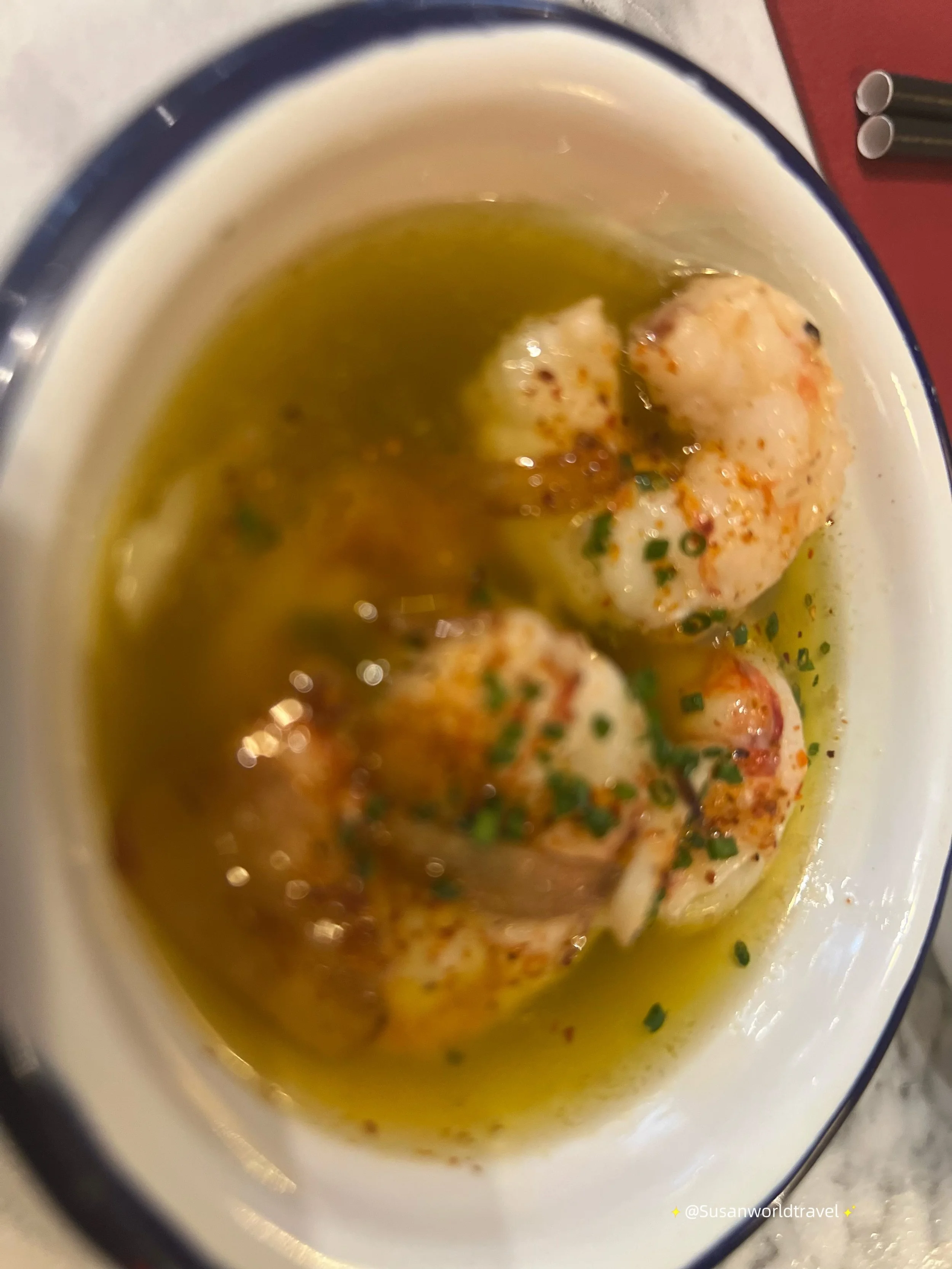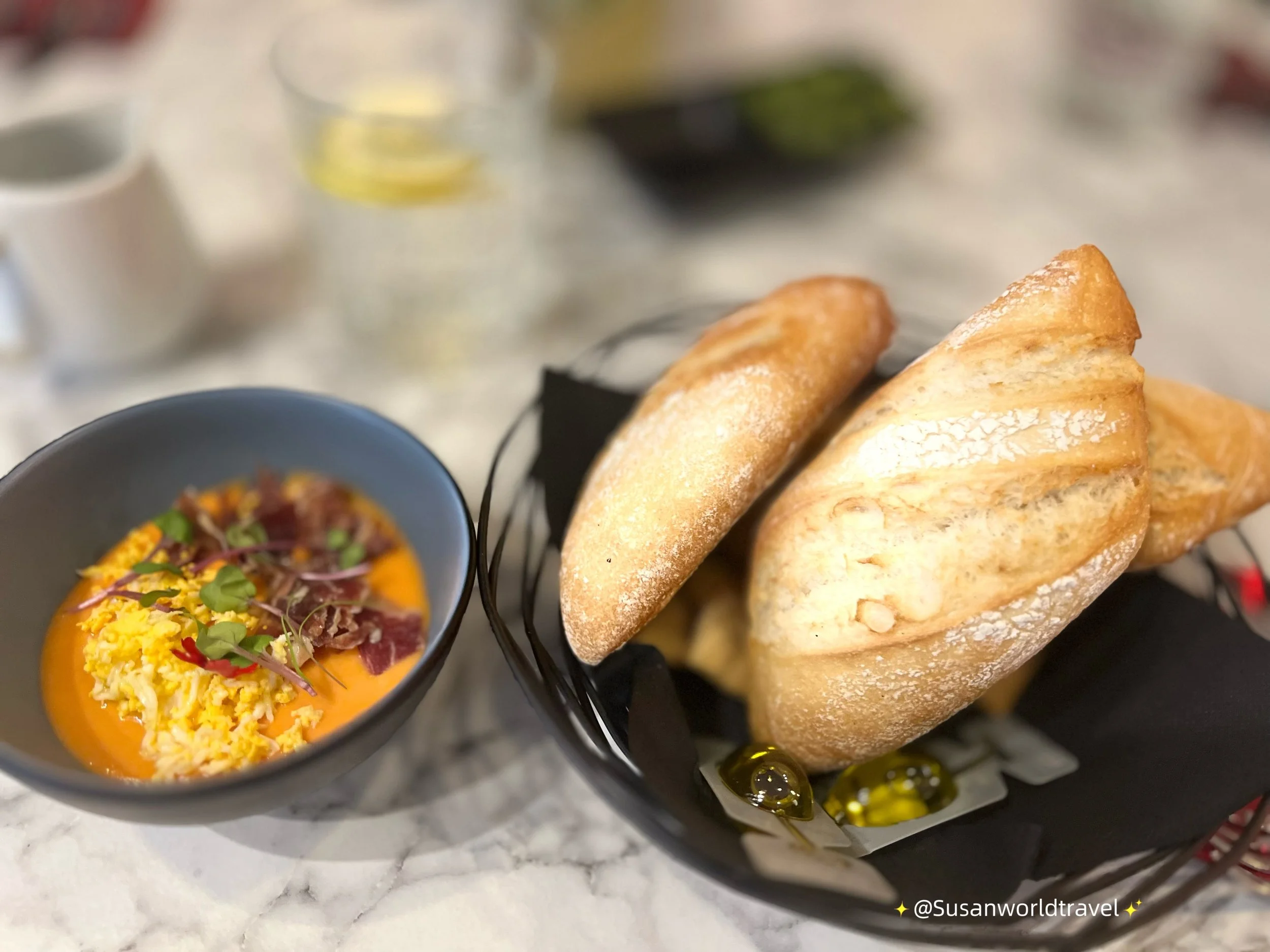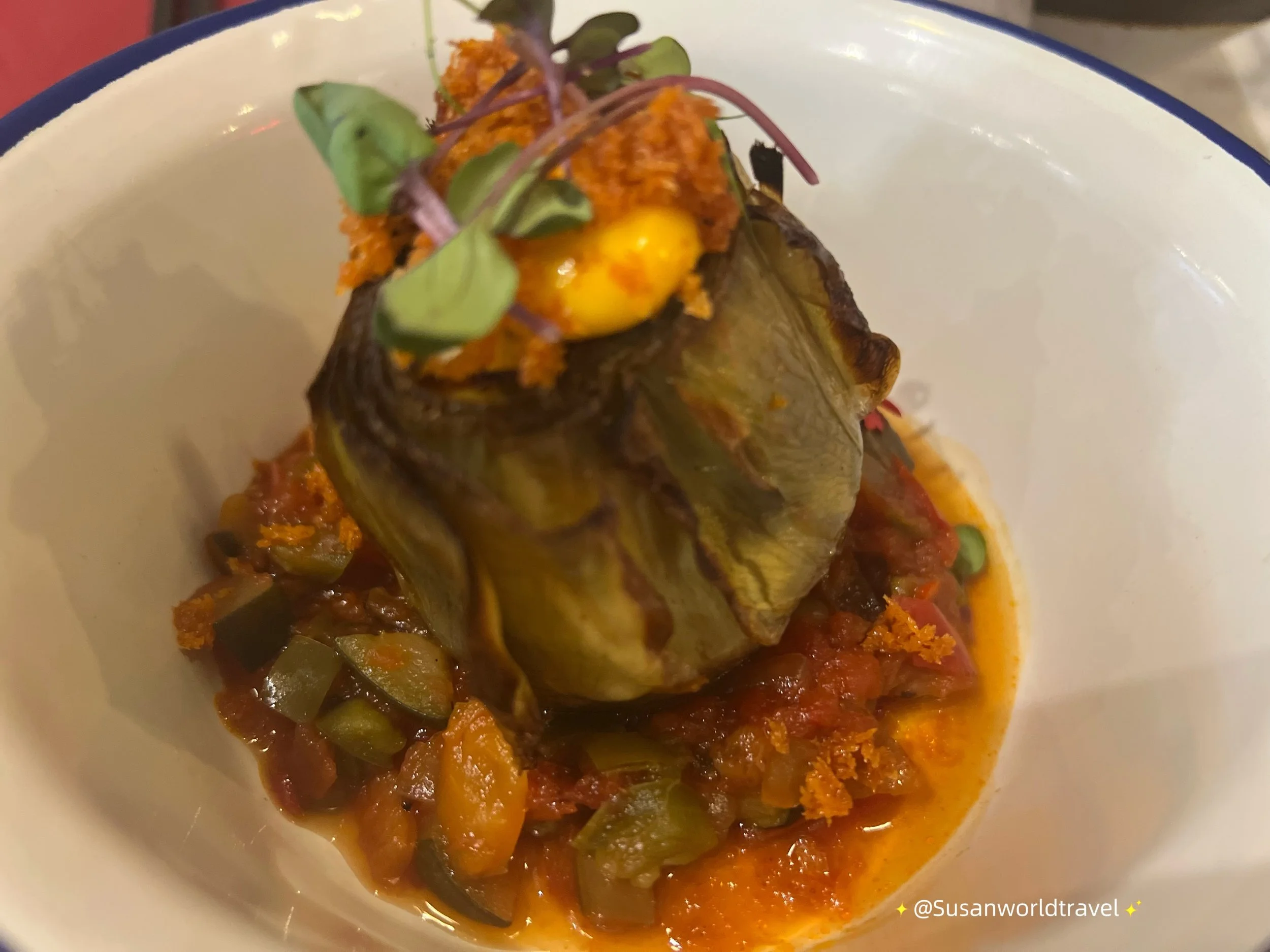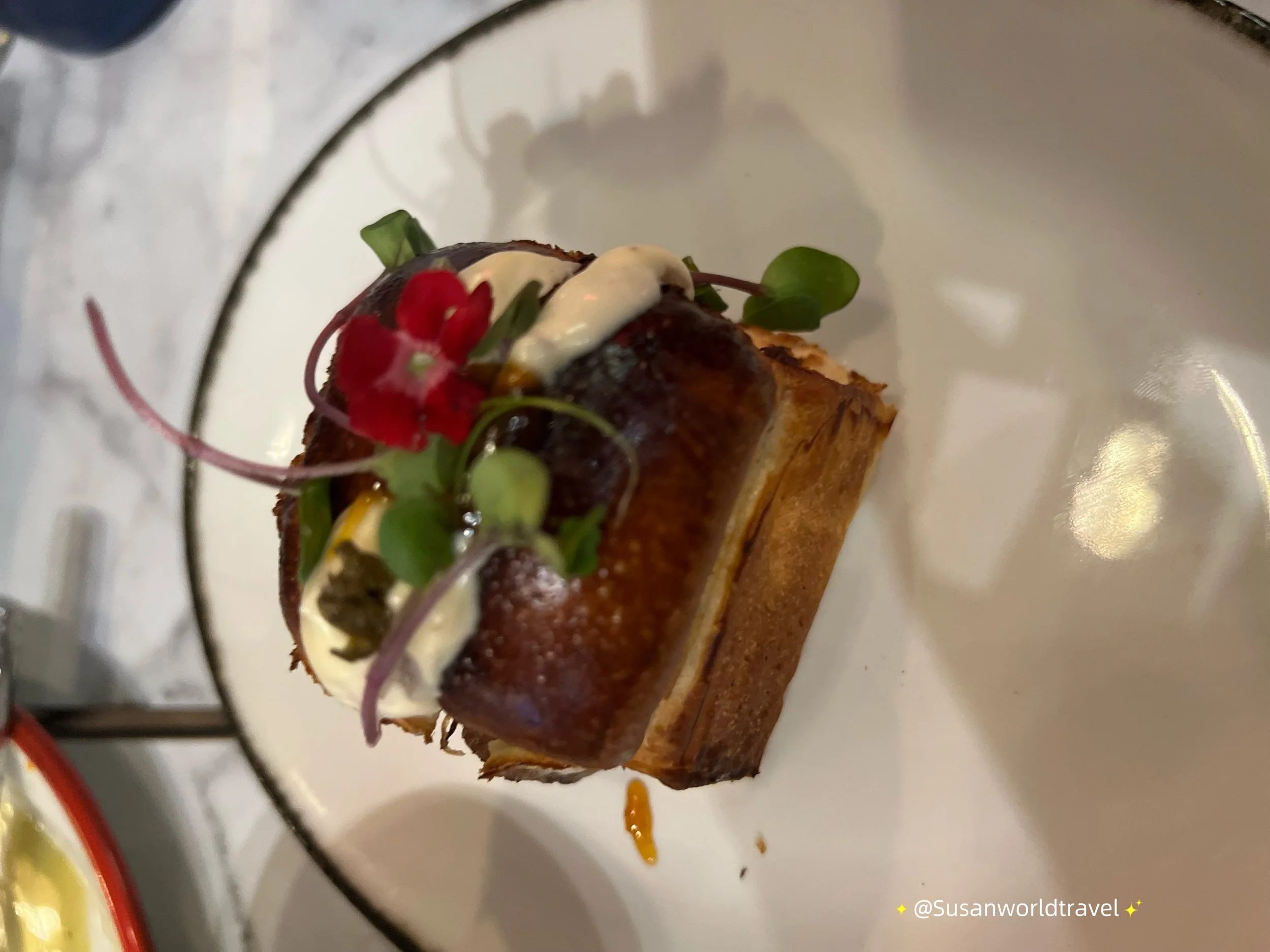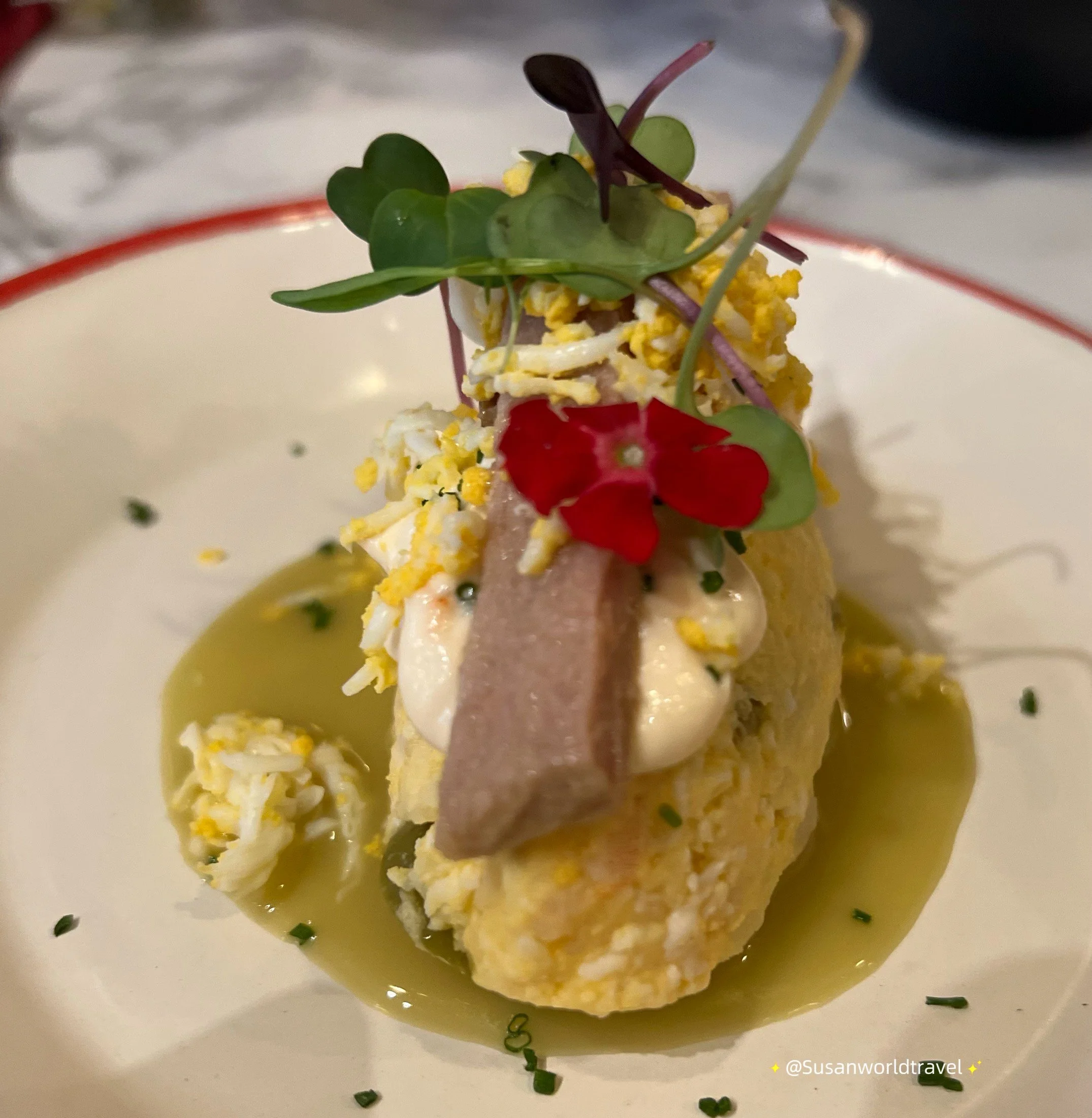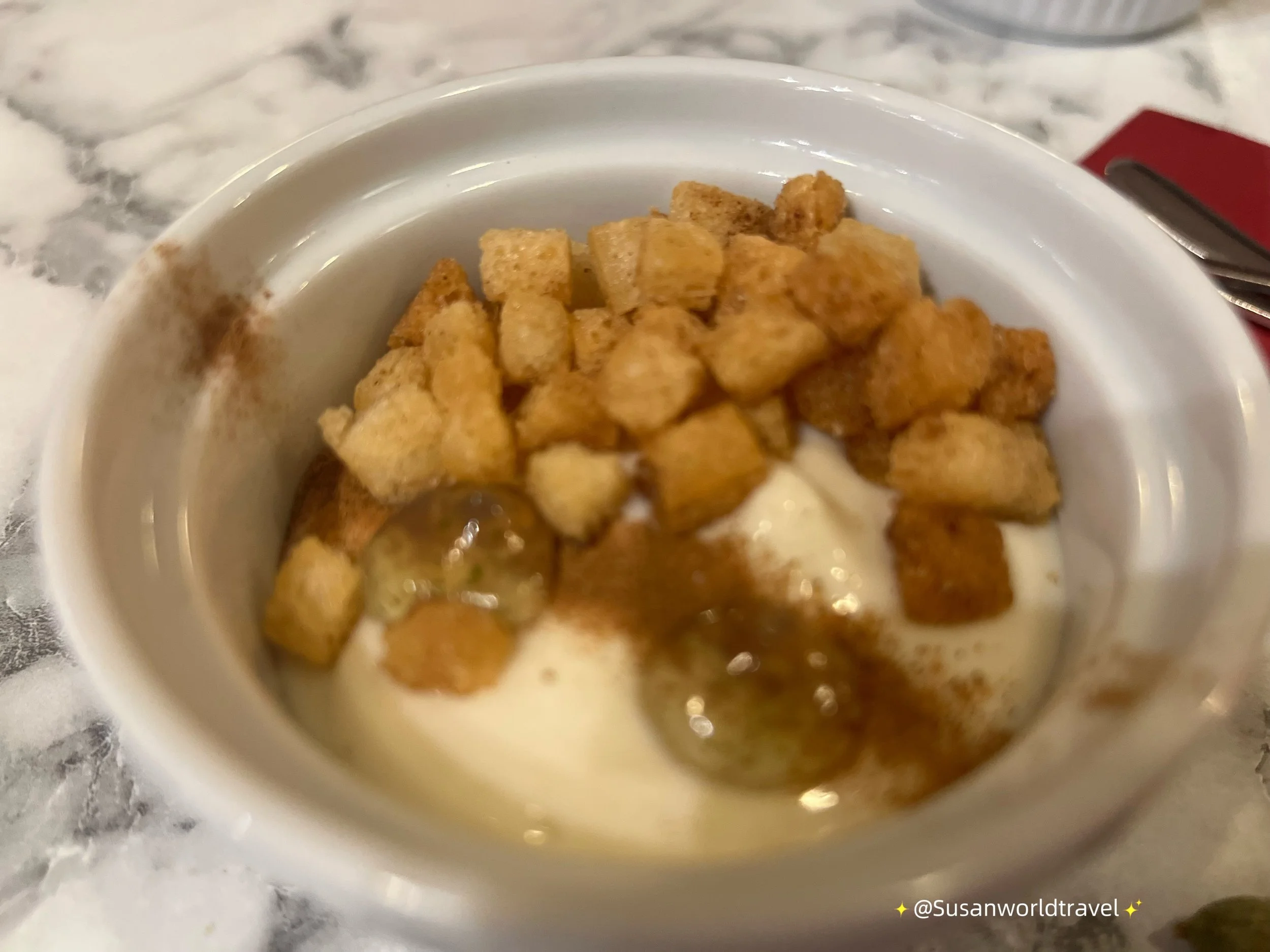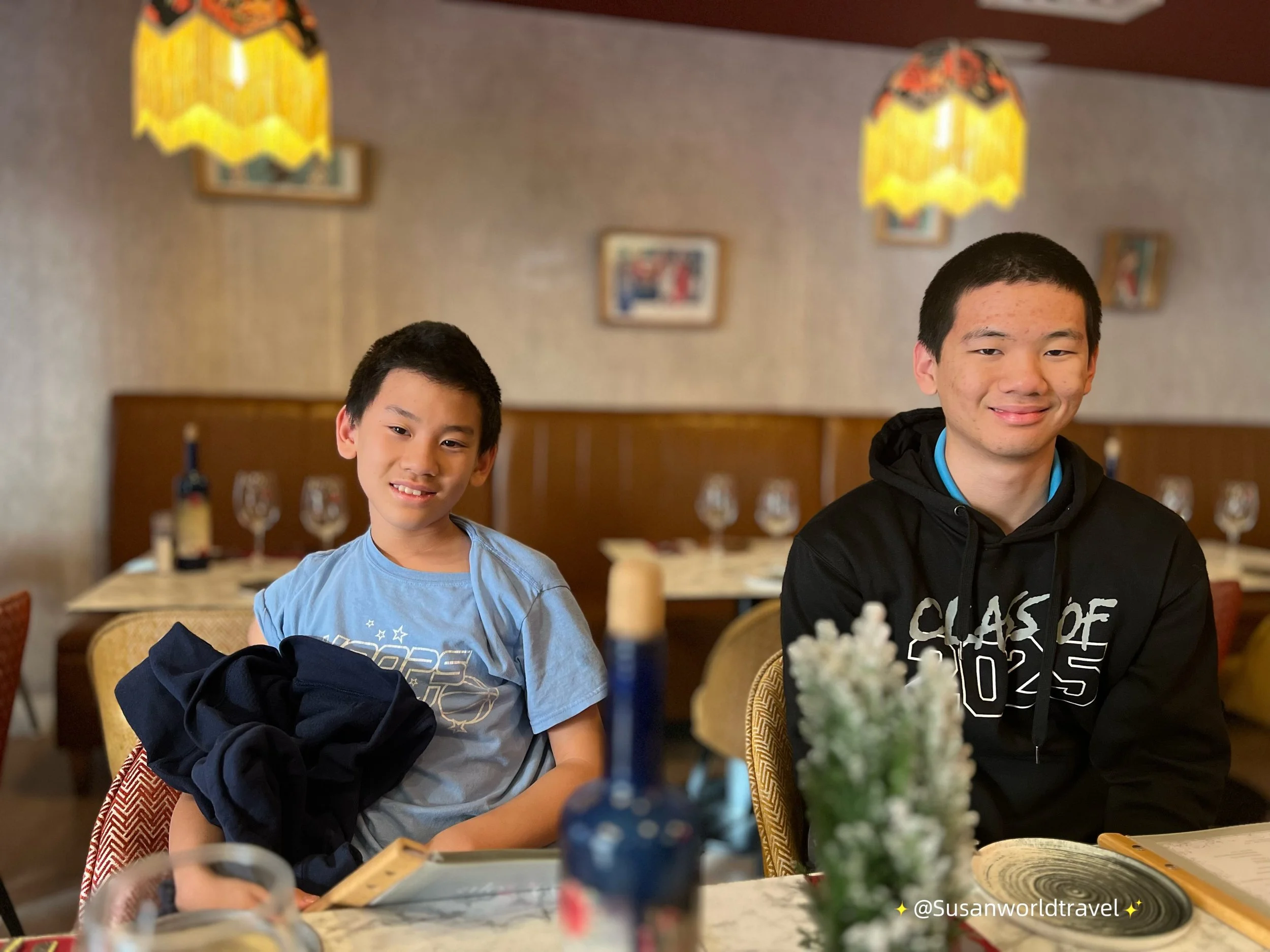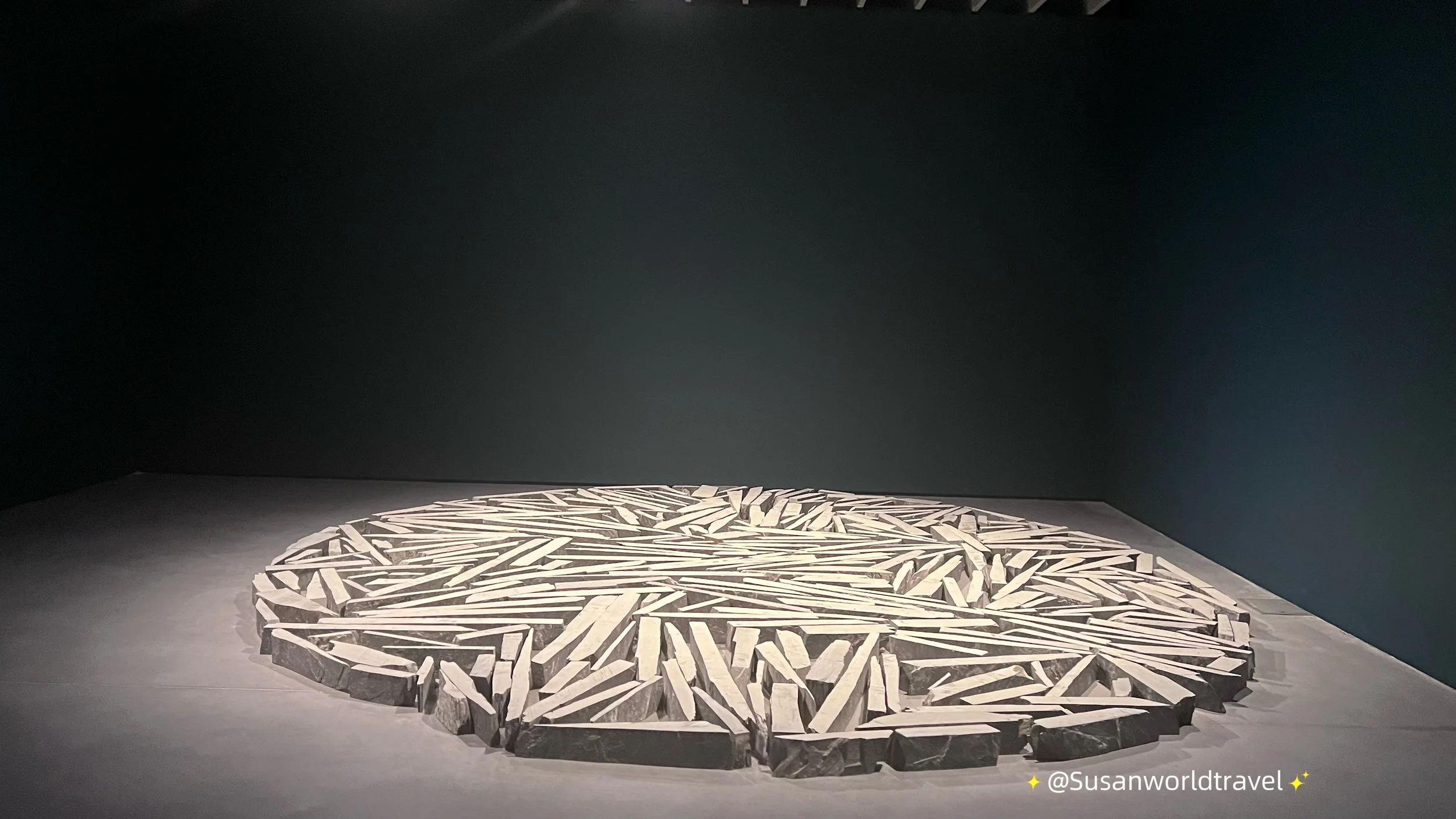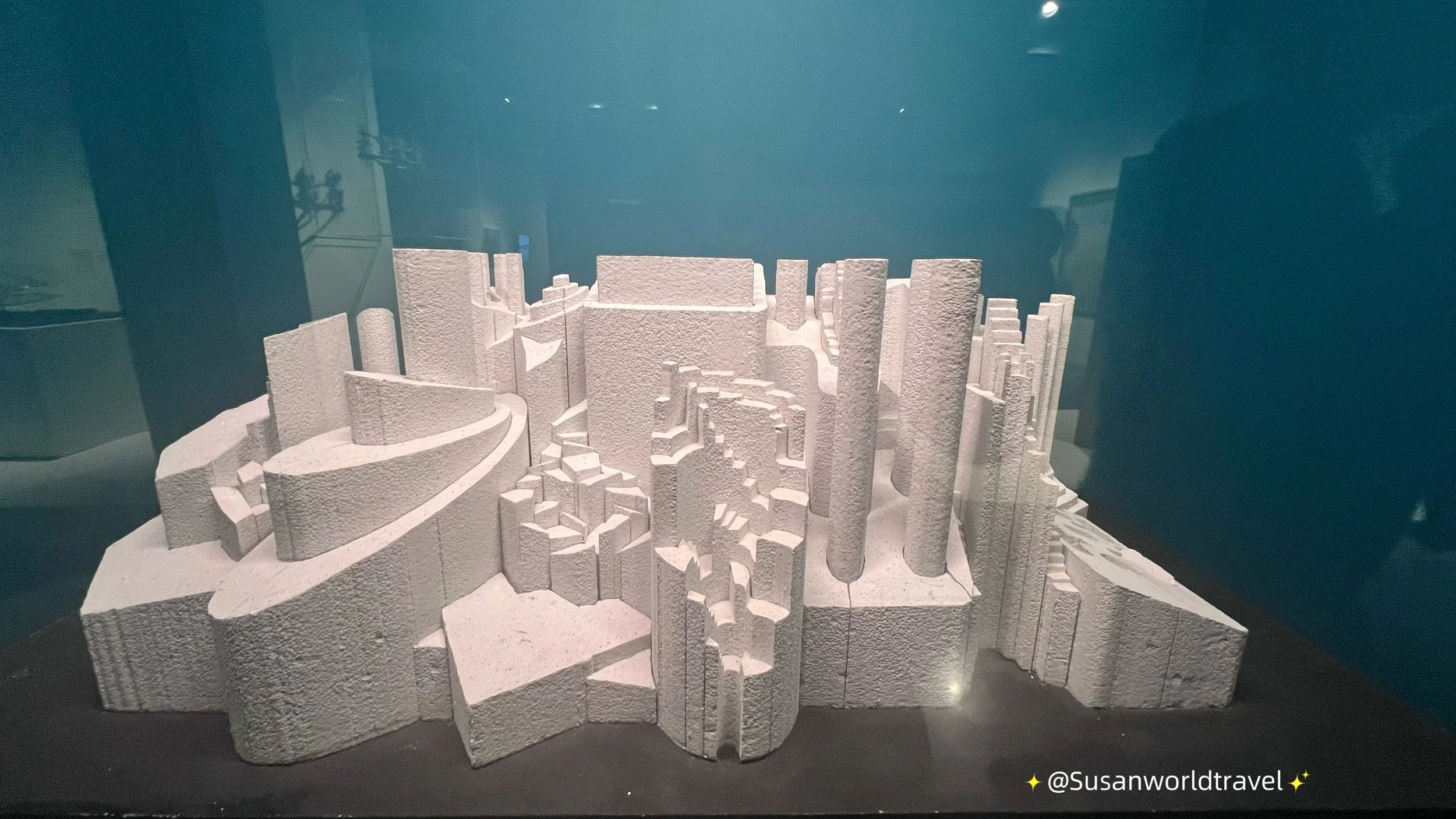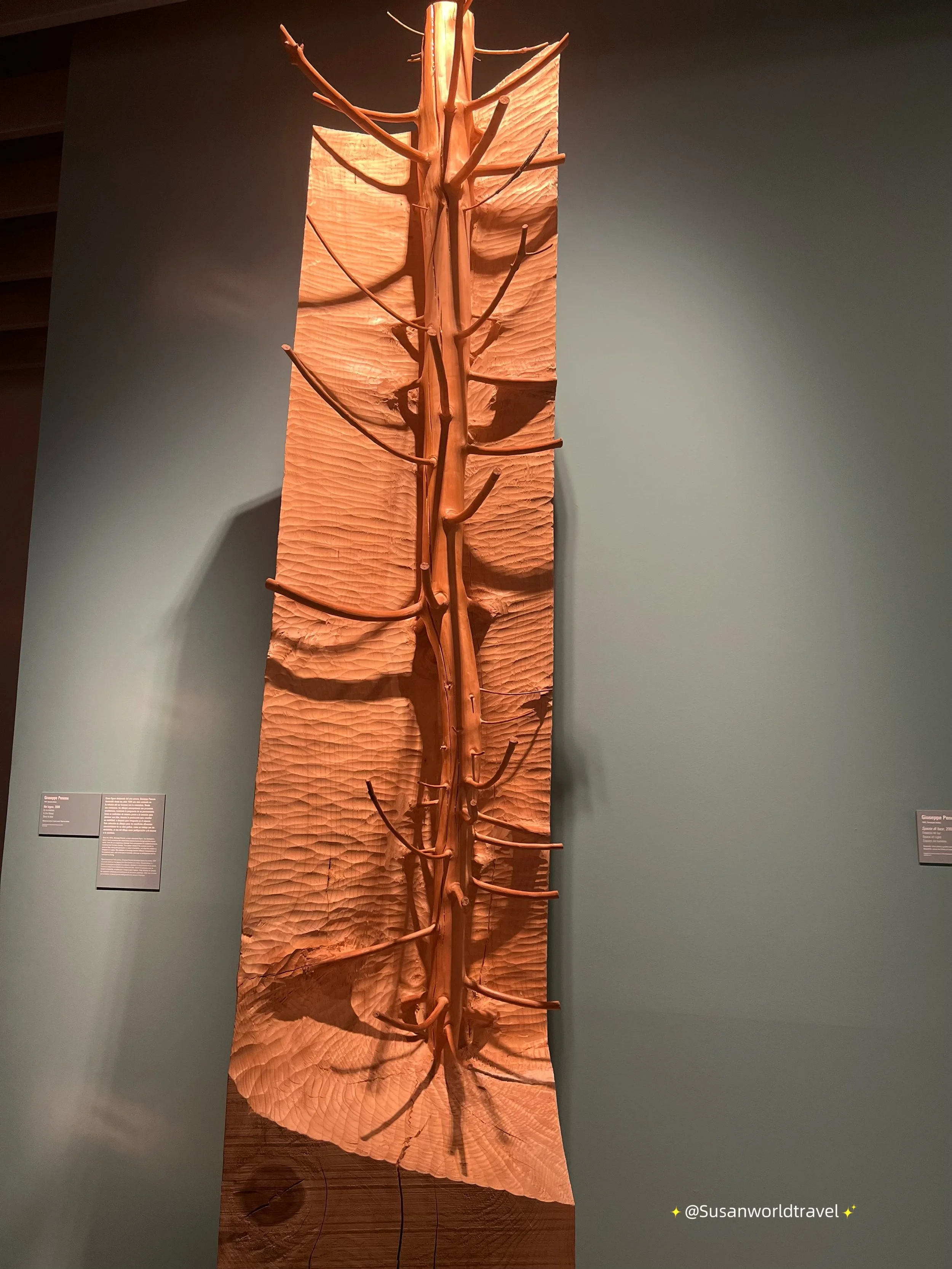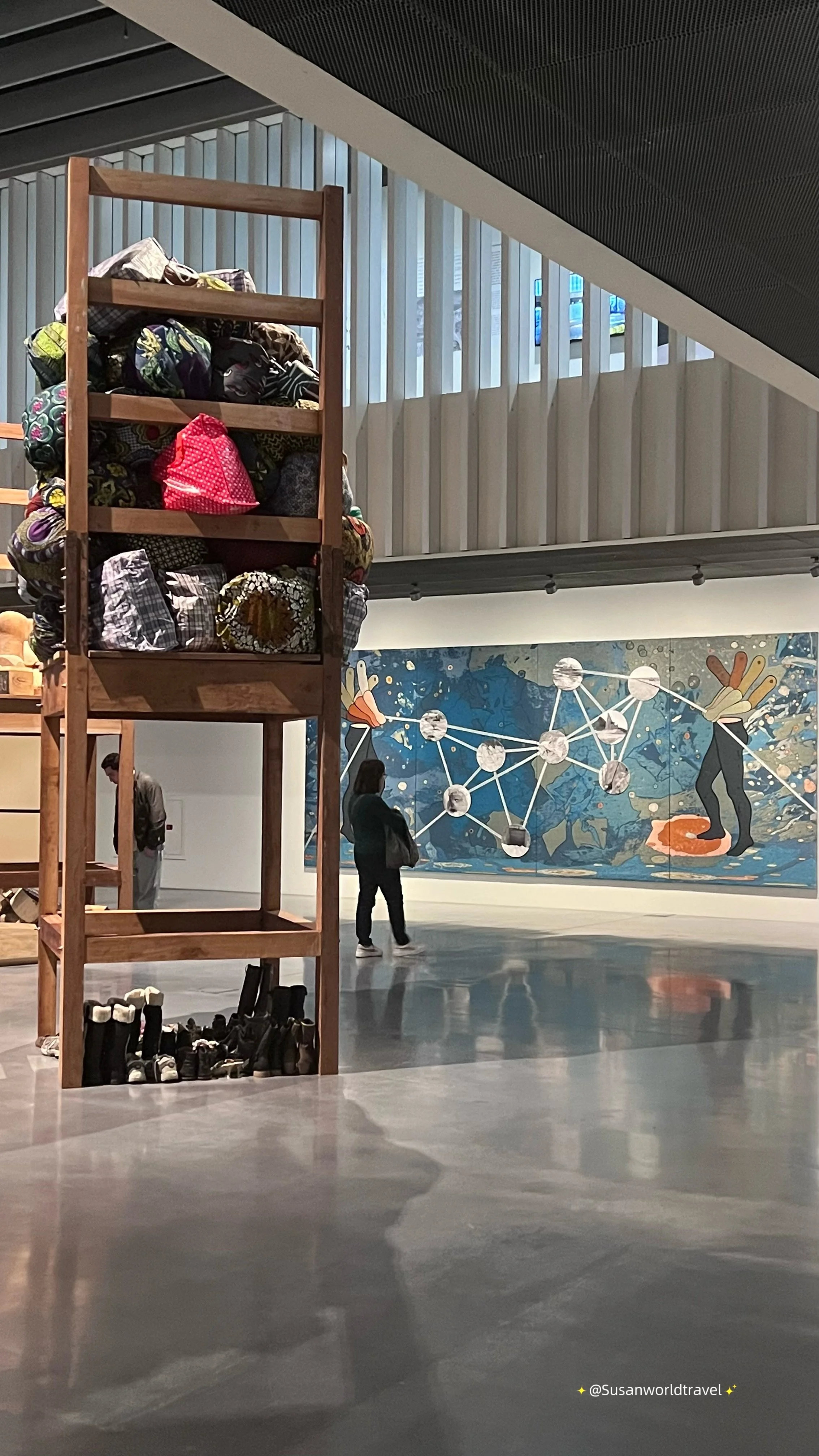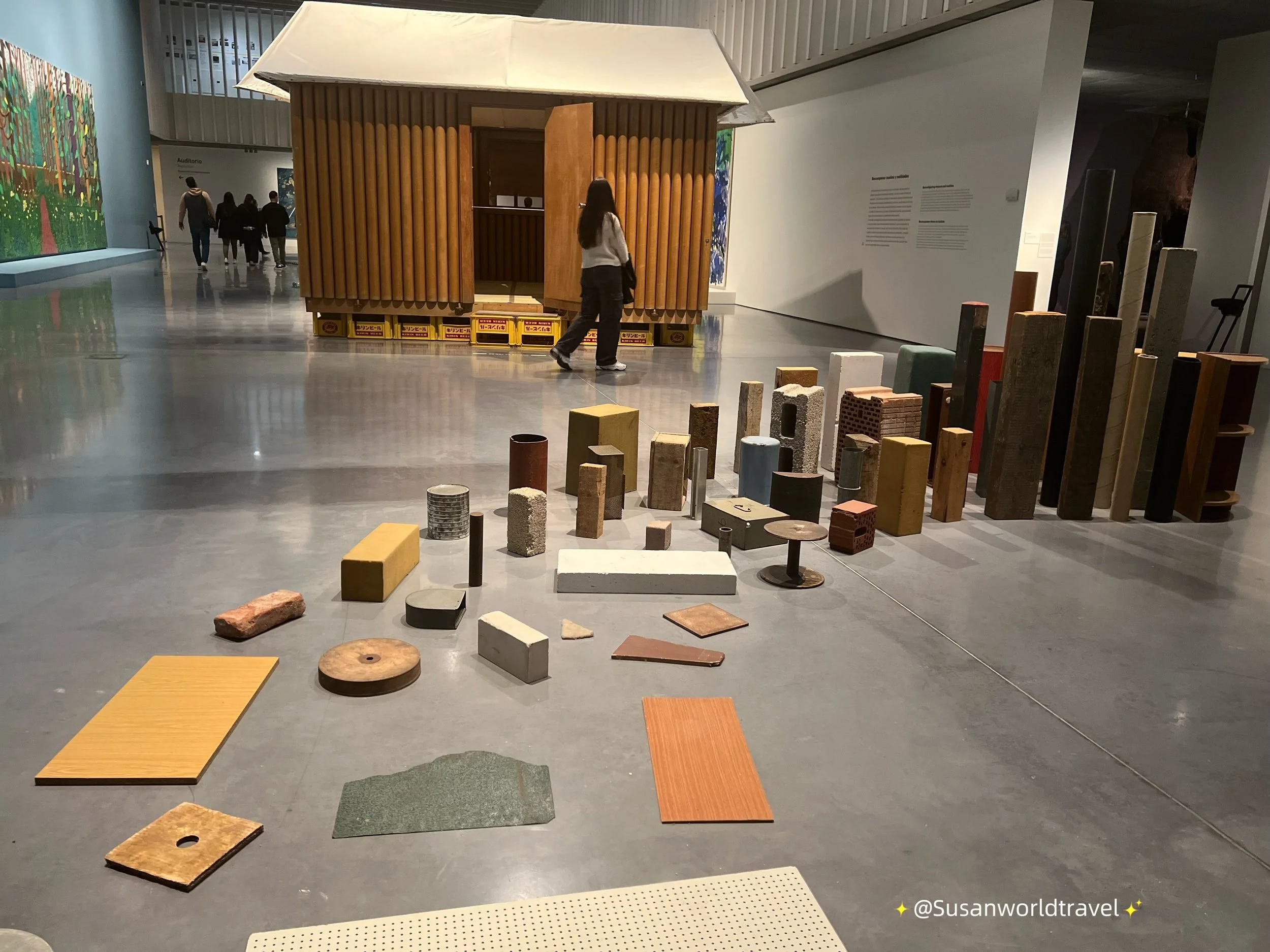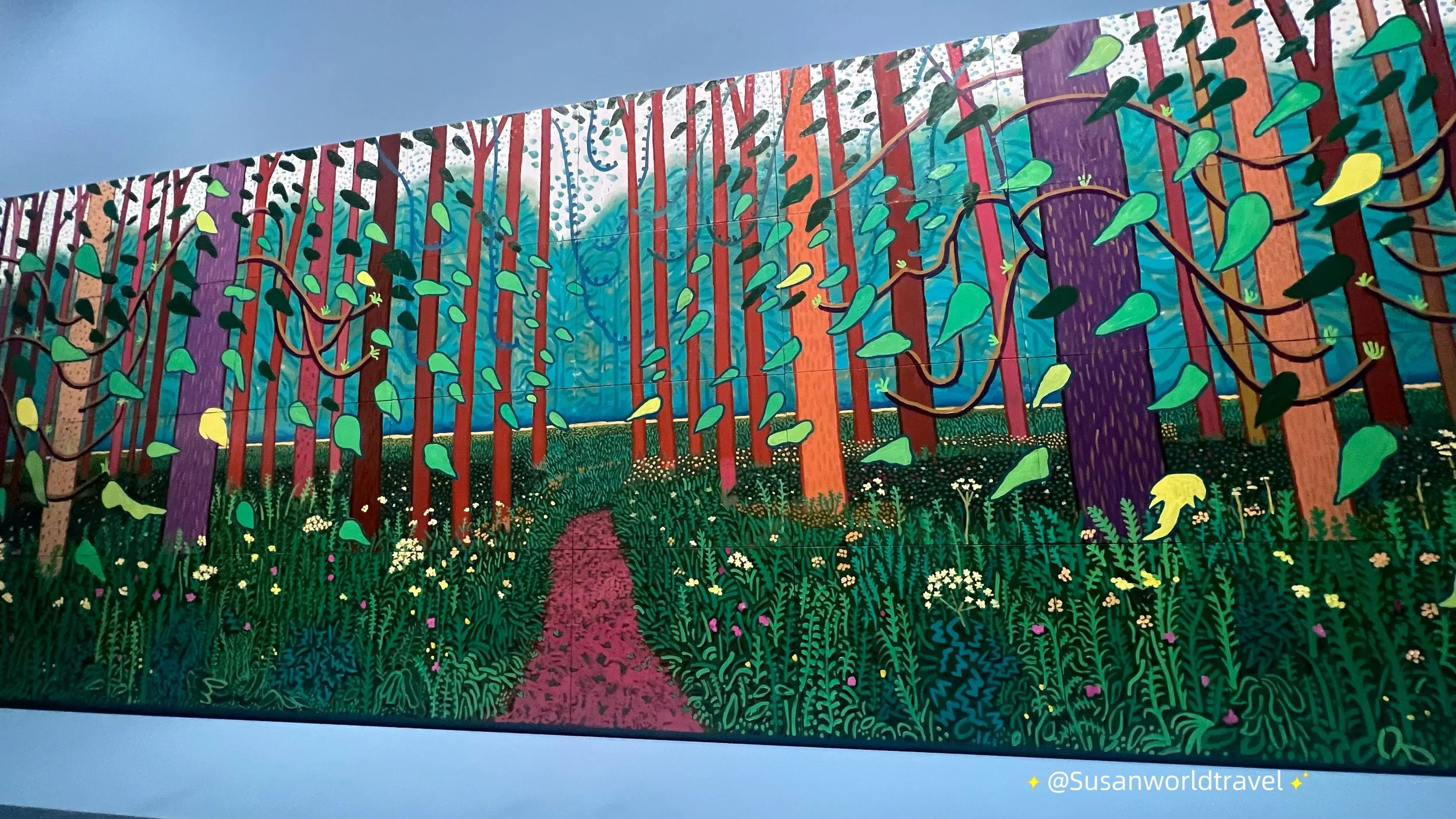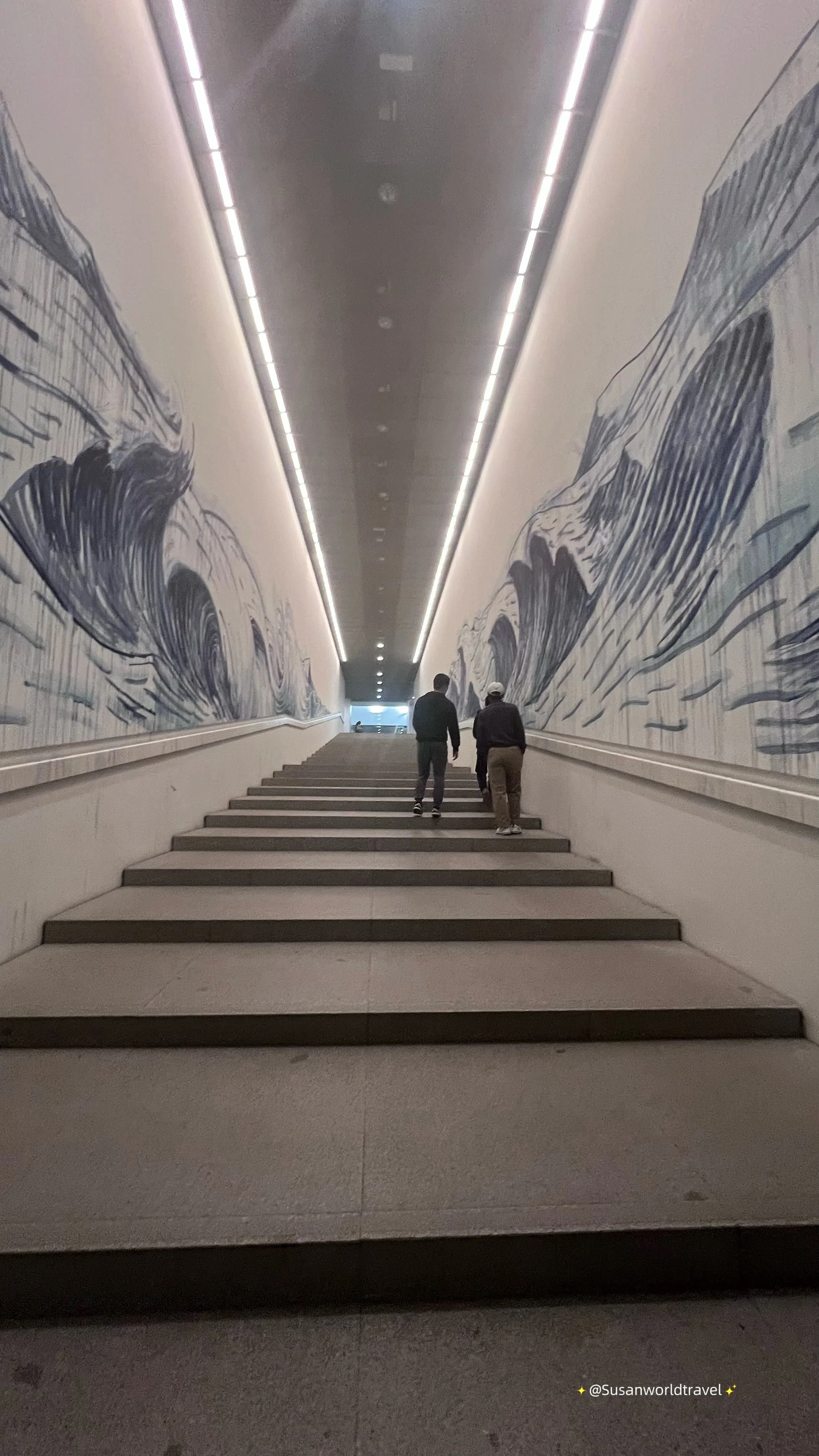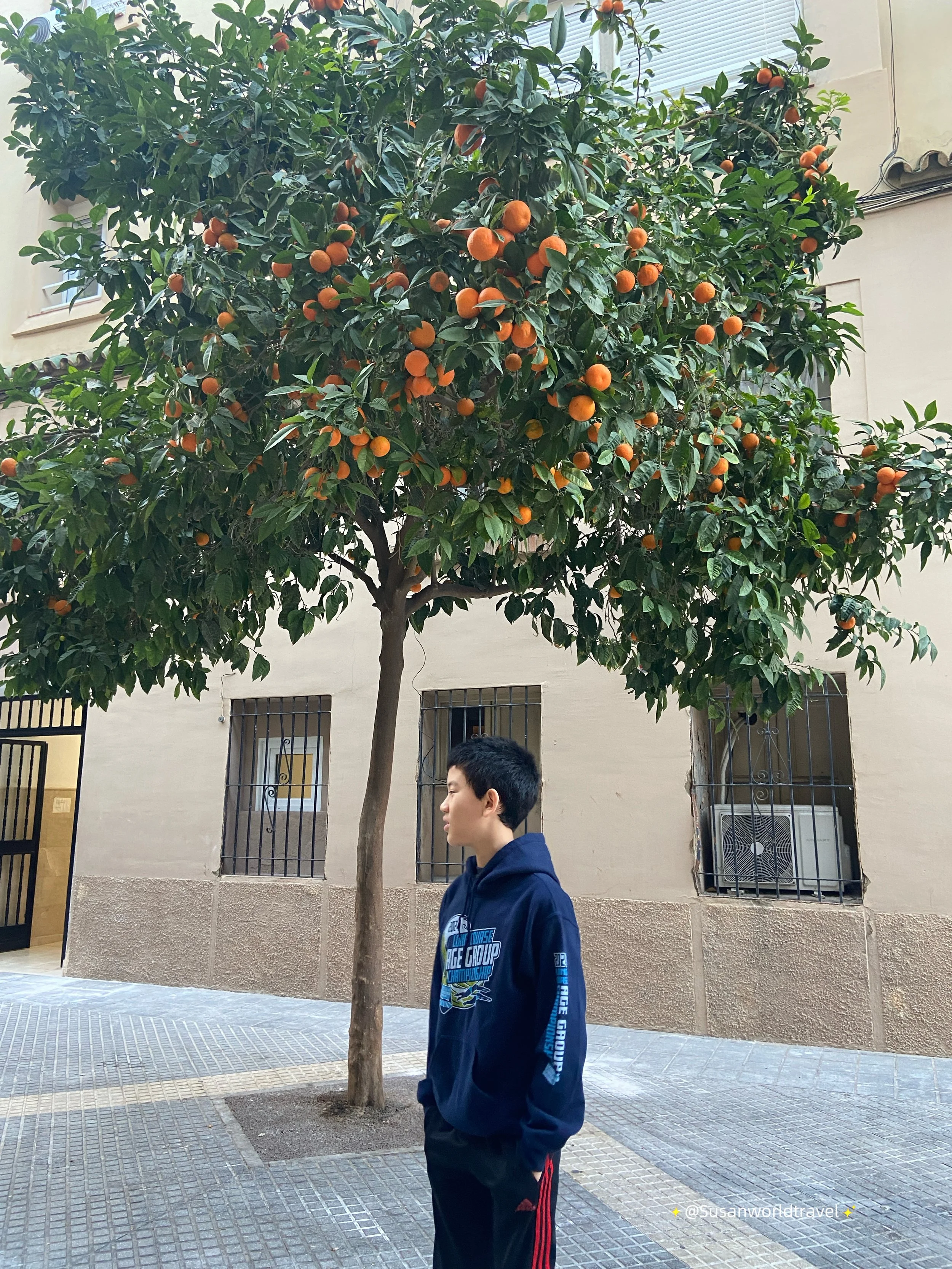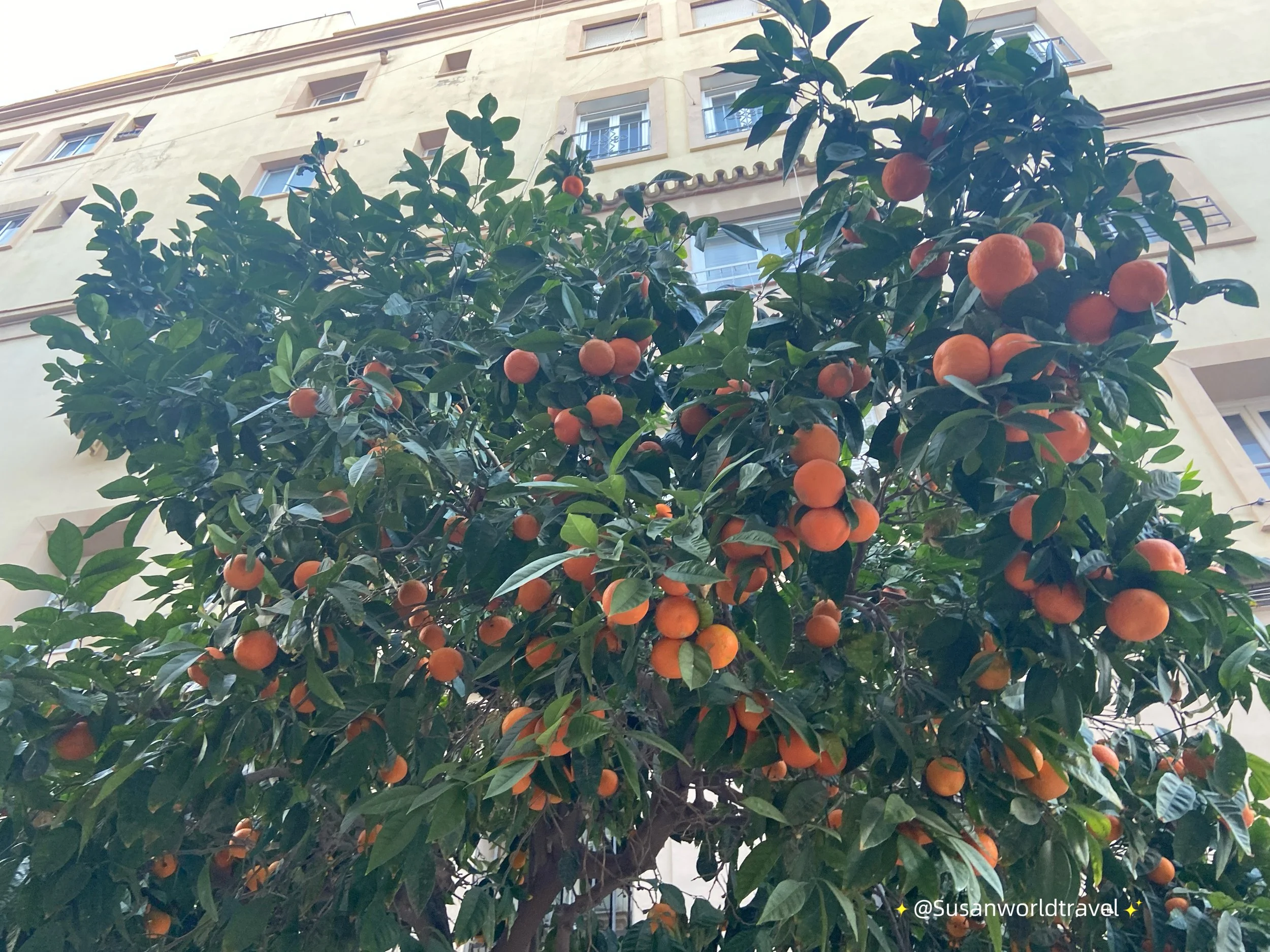Day 1
Navigating between terminals at Madrid's Adolfo Suárez Madrid-Barajas Airport can indeed be time-consuming. Upon arrival at Terminal 4 (T4), reaching Terminal 2 (T2) involves a free shuttle bus ride that takes approximately 15 to 20 minutes, depending on traffic and the time of day. The shuttle operates 24 hours a day, with buses departing every 5 minutes between 6:00 AM and 10:00 PM, and every 20 minutes from 10:00 PM to 6:00 AM. Given this transfer time, it's advisable to allocate at least 3 hours between flights when connecting from T4 to T2. This allows sufficient time for disembarking, shuttle transit, security checks, and re-checking luggage.
We arrived in Málaga around noon and headed straight to a nearby seafood buffet restaurant close to the airport for a satisfying lunch before starting our city exploration.
We booked a flamenco dinner show, and before the performance began, we enjoyed a spread of delicious tapas, setting the perfect mood for an unforgettable evening of music, dance, and Spanish culture. Flamenco is a deeply expressive art form that originated in Andalusia, southern Spain, in the 18th century. It blends song (cante), dance (baile), and guitar music (toque), and draws from a mix of Gypsy, Moorish, Jewish, and Andalusian cultural influences.
After the dinner show, we explored the city by foot. It happened The Centre Pompidou Málaga provides free entry to all visitors every Sunday from 4:00 PM until closing time. We were excited to see the beautiful orange trees all over Málaga, and they looked so vibrant and inviting that my sons couldn’t resist jumping up to pick one and try it. But the moment they took a bite, their faces twisted in shock—it was incredibly sour! Turns out those are Seville oranges, common in southern Spain, and while they look delicious, they're actually very bitter and usually used for marmalade or in perfumes and liqueurs, not for eating raw.

